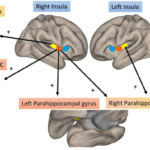 In 2017, an international task force developed updated recommendations for axial and peripheral spondyloarthritis (SpA), as well as psoriatic arthritis (PsA).1
In 2017, an international task force developed updated recommendations for axial and peripheral spondyloarthritis (SpA), as well as psoriatic arthritis (PsA).1
Some drug therapy management recommendations for axial SpA and PsA have used a treat-to-target concept, which has been successfully implemented for other chronic illnesses. The prior recommendations for treating these patients were developed in 2012. At that time, all recommendations for treat-to-target SpA were based on low levels of evidence, consisting mostly of opinions. In the current recommendations, five of the 11 recommendations are based on higher levels of evidence. Five overarching principles and 11 recommendations were developed.
Principles of SpA treat-to-target recommendations:
- The patient and rheumatologist must share in the decision making for the treatment target;
- Treat-to-target by measuring disease activity and adjusting therapy accordingly to improve outcomes;
- SpA and PsA are multi-faceted systemic diseases; therefore, managing extra-articular and musculoskeletal manifestations should be coordinated, as needed, between the rheumatologist and other specialists (e.g., dermatologist, gastroenterologist, ophthalmologist);
- The goals of SpA and PsA treatment are to optimize long-term health-related quality of life and social participation by controlling disease signs and symptoms, preventing structural damage, normalizing and/or preserving function, avoiding toxicities and minimizing comorbidities; and
- Abolishing inflammation is important to achieve treatment goals.
Recommendations:
- Clinical remission or inactive disease of musculoskeletal (i.e., arthritis, dactylitis, enthesitis and axial disease) and extra-articular manifestations should be the treatment target;
- The treatment target should be individualized based on the current clinical disease manifestations. The treatment modality should be considered when defining the time required to reach the target;
- The absence of clinical and laboratory evidence of significant disease activity is the definition of clinical remission and inactive disease;
- An alternative treatment target may be low or minimal disease activity;
- Disease activity should be measured on the basis of clinical signs and symptoms, and acute phase reactants;
- Validated measures of musculoskeletal disease activity and assessment of cutaneous and/or other relevant extra-articular manifestations should be used in clinical practice to define the target and guide treatment decisions. The level of disease activity should dictate the frequency of these measurements;
- The Ankylosing Spondylitis Disease Activity Score (ASDAS) is the preferred measure for axial SpA. The Disease Activity index for Psoriatic Arthritis (DAPSA) or Minimal Disease Activity (MDA) should define the target in PsA patients;
- The target choice and disease activity measure should consider comorbidities, patient factors and drug-related risks;
- Imaging results may be considered in clinical management in addition to clinical and laboratory measures;
- After the target is attained, it should be maintained throughout the disease course; and
- Treatment target discussions should be achieved with that patient’s involvement and discussion, including informing them about risks and benefits of the strategy planned to reach the target.

